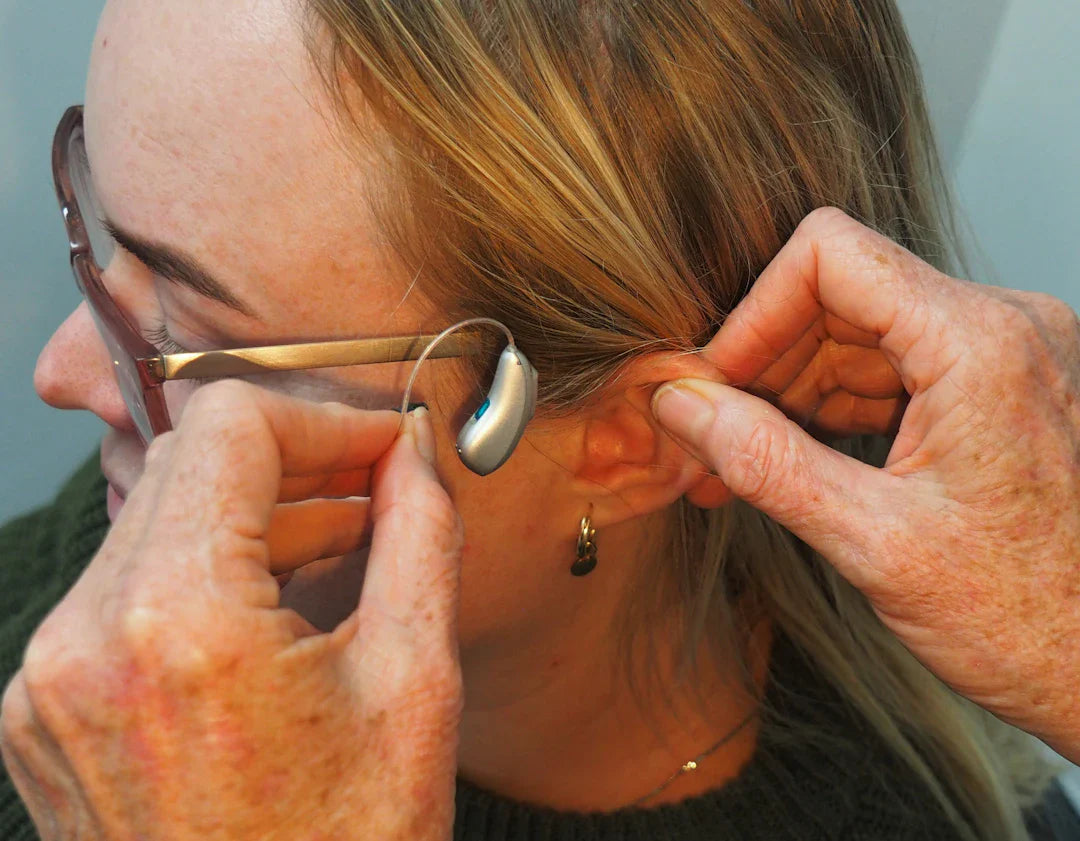As we navigate through life, hearing plays a crucial role in our ability to communicate and connect with others. Sadly, hearing loss can be a common issue, particularly as we age. Hearing aids offer a revolutionary way to improve auditory experience, but they’re often surrounded by a cloud of myths and misunderstandings. This blog aims to debunk some of the most prevalent myths about hearing aids and provide clarity on the realities of hearing care for everyone.
Myth 1: Hearing Aids are Only for Older People
It’s a common misconception that hearing aids are exclusively designed for the elderly. In reality, hearing loss can affect individuals of all ages. Factors such as genetics, prolonged exposure to loud noises, and certain medical conditions can contribute to hearing impairment. Young adults and even children can suffer from hearing loss, making the use of hearing aids relevant for all demographics.
What You Should Know
- Hearing loss can develop at any time in life.
- Early intervention with hearing aids can significantly enhance quality of life.
- Younger users often appreciate advanced technology and style options.
Myth 2: Hearing Aids are Bulky and Uncomfortable
Another prevalent myth is the belief that hearing aids are cumbersome and uncomfortable to wear. Today's advancements in audiology have revolutionised the design of hearing aids. Modern devices are sleek, discreet, and often virtually invisible when worn.
Innovations in Hearing Aid Design
Contemporary hearing aids come in various shapes, styles, and sizes, catering to individual preferences and lifestyle needs. From behind-the-ear models to in-the-ear versions, there’s a solution for everyone. With the availability of custom-fitted options, many users find them to be both comfortable and aesthetically pleasing.
Myth 3: Hearing Aids Restore Hearing to Normal
Many people believe that hearing aids can completely restore their hearing abilities. While these devices significantly improve hearing loss, they do not return your hearing to its original state. Hearing aids amplify sound, making it clearer, but they cannot make sounds as they once were.
The Reality of Hearing Aids
Hearing aids can enhance your ability to hear conversations, especially in noisy environments, but it's essential to have realistic expectations. Audiologists can help set achievable goals based on your specific hearing loss condition and lifestyle.
Myth 4: Hearing Aids are Too Expensive and Not Worth the Investment
One of the primary deterrents for individuals considering hearing aids is the misconception that they are prohibitively expensive. While it’s true that high-quality devices can carry a hefty price tag, many options are available at various price ranges, making hearing care accessible to a broader audience.
Cost vs. Value
Investing in hearing aids is an investment in your health and well-being. Quality hearing aids can significantly improve communication abilities, resulting in better social connections and improved mental health. Additionally, programs are available for financial assistance, making it easier to afford various models fitted to your needs.
Myth 5: Hearing Aids Are All the Same
Some individuals believe that all hearing aids function in the same way, missing the nuance in technology and customisation. The truth is, hearing aids vary widely in terms of features, performance, and suitability for individual needs.
Understanding Your Options
- Digital vs. Analogue: Digital aids convert sound into numerical codes for precise amplification.
- Variety of Features: Technology now includes Bluetooth connectivity, rechargeable batteries, and advanced noise reduction options.
- Personalisation: Audiologists help in fitting hearing aids that match your unique hearing loss profile.
Myth 6: You Don’t Need to See a Professional for Hearing Aids
A prevalent misconception is that individuals can simply purchase hearing aids online without professional assistance. However, diagnosing and addressing hearing loss is complex, and consulting an audiologist is crucial to ensure you get the right device for your specific needs.
The Importance of Professional Audiology Care
A qualified audiologist provides valuable services, including comprehensive hearing assessments and counselling on hearing care practices. They can assist in selecting hearing aids, adapting settings, and providing ongoing support. Proper earwax removal is also an essential step before fitting hearing aids to ensure optimal performance.
Myth 7: Hearing Aids Are Just Simple Amplifiers
Many people think that hearing aids merely amplify sounds like a simple microphone. In reality, hearing aids are sophisticated devices that process sound and filter out background noise, making conversations more intelligible.
Advanced Technology in Hearing Aids
Modern hearing aids often feature advanced processing capabilities, allowing users to adjust settings based on their listening environment. Noise reduction, directionality, and feedback cancellation are just a few examples of how hearing aids improve sound quality.
Myth 8: Using Hearing Aids Will Damage My Hearing Further
Some individuals fear that wearing hearing aids will worsen their hearing loss. This is a misunderstanding. Inappropriate sound levels or neglecting hearing care can lead to further problems, but well-fitted hearing aids, when used correctly, do not cause additional damage.
Protecting Your Hearing Health
- Regular check-ups with an audiologist ensure your devices are appropriately adjusted.
- Proper ear hygiene, including earwax removal, plays an essential role in maintaining ear health.
- Wearing hearing aids allows for better hearing, leading to less strain on your ears.
Myth 9: You’ll Get Used to Hearing Aids Instantly
Many people believe that once they start using hearing aids, they will adapt immediately. However, the transition to using hearing aids can take time and requires patience.
Adjusting to Hearing Aids
When you first wear hearing aids, your brain must relearn how to process the sounds it’s been missing. Gradually increasing the amount of time you wear your hearing aids each day can facilitate a smoother adjustment period. Audiologists can help guide you through this transition.
Myth 10: Hearing Aids Can be Used Without Maintenance
Lastly, some assume that hearing aids are maintenance-free. Like any electronic device, they require regular care to perform effectively. Neglecting proper maintenance can lead to malfunctions or reduced efficacy.
Tips for Maintaining Your Hearing Aids
- Regularly clean your devices as per the manufacturer’s instructions.
- Replace Rayovac hearing aid batteries promptly to ensure optimal performance.
- Schedule regular follow-ups with your audiologist for device maintenance and functionality checks.
Your Journey to Better Hearing Awaits!
With so many myths surrounding hearing aids, it’s essential to separate fact from fiction. Understanding the realities of hearing loss and hearing aids can pave the way for better hearing care and a more fulfilling life. If you or someone you know is struggling with hearing loss, don’t let these myths deter you from seeking help. Remember, hearing aids are not merely tools; they are life-enhancing devices that can help you reconnect with the world around you. Start your journey today and embrace the sounds of life!




